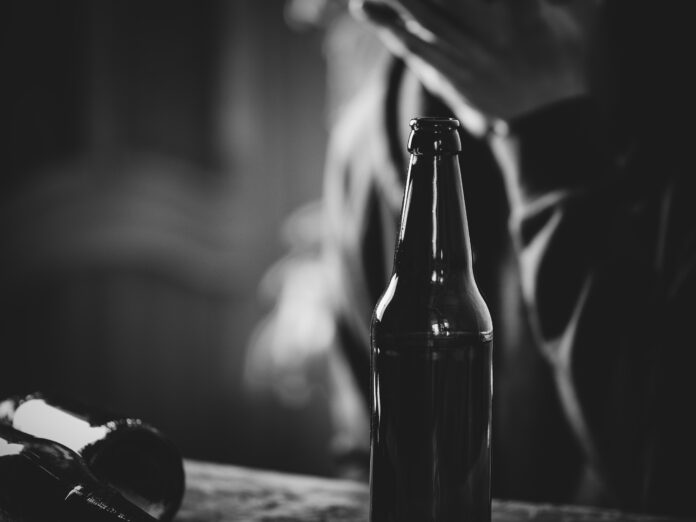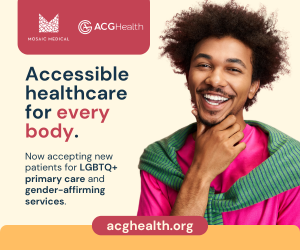This story is part two in a series, with last week’s story covering America’s most common addiction. Some names in this story have been altered to protect the privacy of the interviewees.
Alcohol is the most common substance abused in the U.S. and the world. Alcohol addiction and alcoholism — now called alcohol use disorder (AUD) — kills more Americans than those other drugs annually. It is the most likely the first drug tried by teenagers and even tweens and it’s a common addiction among the elderly.
There is no age group untouched by alcohol use. The CDC (Centers for Disease Control and Prevention) states that “a significant portion of the population over 12 years old reports using alcohol in the past year” and that “Alcohol is considered the most commonly used substance in the United States, meaning more people use alcohol than any other drug or substance.”
As PGN reported, for LGBTQ+ people, AUD is a very serious problem, yet one that gets little attention. Alcohol is present in our queer and trans lives in ways other drugs are not.
Data on LGBTQ+ individuals is still developing, as many federally funded research studies have only recently started asking for participants’ sexual orientation and gender identity. According to the National Library of Medicine, about 30% of the LGBTQ+ community has moderate alcohol dependency, compared to 5-10% of the general population. Within the community itself, there are groups that report heavier AUD than others. Gay and bisexual men under 35 have a 55% rate of alcohol use while 25% of bisexual women reported heavy drinking. Yet only 7.4% of addiction treatment programs offered specialized services for LGBTQ+ patients.
LGBTQ+ people with AUD speak out
PGN interviewed LGBTQ+ people, some of whom are in recovery and some who are not, for this series. All agreed that alcohol had been present in their lives from a young age.
Lena Miller told PGN that she had her first drink at 13 and began drinking regularly throughout high school with friends and in clubs.
“I knew I was a lesbian by the fifth grade,” Miller said. “I was at an all-girls Catholic school and there were a few of us who just knew we were gay. I gravitated toward those girls and they introduced me to the gay scene in the Gayborhood.”
With that scene — and purloined ID — Miller said she found a couple drinks “made me more confident, more able to interact with strangers. I wanted to have a community, to meet other lesbians outside my high school. It was a heady time for me and alcohol definitely helped fuel my introduction to gay life. Alcohol was all around me, it was cool and I felt cool when I was drinking.”
LBQ women and AUD
Research has shown that lesbians are more likely to misuse alcohol over their lifetimes. They have reported heavier alcohol use, more frequent use and more binge drinking than heterosexual women. Data suggests that lesbians are more likely to develop an alcohol use or drug dependency disorder than heterosexual women, but they are also more likely to seek treatment for the substance problem.
The National Institute on Drug Abuse (NIDA) at the National Institutes of Health (NIH) found that LGBTQ adults in the U.S. were more likely to engage in binge drinking in the past year and that they began drinking alcohol at earlier ages than heterosexual adults. In addition, LGB adolescents were 90% more likely to use alcohol and illicit substances than heterosexual youth. Lesbian and bisexual females were four times as likely to use these substances than heterosexual females of the same age.
While ‘minority stress’ is often cited as a key factor in explaining LBQ women’s high rates of alcohol consumption, one recent study in Science Direct found “Drinking is gendered for LBQ women, enabling both performance of and resistance to gendered norms. Additionally, alcohol emerged as a tool for navigating gendered vulnerability in public spaces, with some participants shaping their alcohol intake to their environment. Our findings highlight the need for approaches to LBQ women’s health that recognize alcohol as a social tool that can facilitate confidence, pleasure, and community connection.”
This description is exactly how Miller explained her own introduction to both alcohol and concomitantly, the gay club scene as a teenager.
“All the dykes I know drink beer,” noted one lesbian in the Science Direct study. Miller said having a long-neck beer in her hand in a club always made her feel “just a little more butch and in control.”
Bisexual women report elevated alcohol and drug use compared to other sexual minority women. The National Library of Medicine at NIH explained that “bisexual women experience unique sexual discrimination (i.e., binegativity) and are at heightened risk for other forms of victimization and other stressful life events. Given this heightened experience with stress, bisexual women may use alcohol as a maladaptive coping mechanism. Further, disclosure of one’s sexual identity may produce opportunities for connecting with the LGBTQ+ community, but such openness may increase exposure to discrimination and stigmatization among bisexual women.”
Tanya Morales, a Latina bisexual graduate student at a local university, told PGN she began drinking in high school at parties and found “it freed me up to explore my bicuriousness.”
Morales laughed as she said, “I definitely kissed a girl and liked it. But it was having a few drinks that loosened me up. It also gave me plausible deniability — ‘oh did that happen? I must have been wasted’ — in case I wanted to backtrack.”
Trans people and alcohol
The 2015 US Transgender Survey, the largest assessment of transgender health status and needs to date, found a high prevalence of binge drinking overall, with binge drinking levels much higher in transgender communities of color than in white non-Hispanic peers.
According to a 2024 NIH study, “transgender and non-binary people may be at increased risk of alcohol harms, but little is known about motives for drinking in this community. This study explored the relationship between risk of alcohol dependence, experience of alcohol harms, drinking motives, dysphoria and discrimination.”
In addition, “coping motives, enhancement motives, and drinking to manage dysphoria [among trans people] were associated with higher Alcohol Use Disorders (AU) Identification Test scores. Social, coping and enhancement motives alongside discrimination and drinking to have sex were associated with harms.”
For Maya, a Black trans woman who designs clothes and works in a hair salon in West Philly, alcohol was part of her transition process.
“It made me feel safer to have a couple shots of tequila or gin or vodka — something that would hit me quick and give me just enough of a buzz that I could get myself together and get dressed and go out and feel like I was myself,” Maya said.
Maya says she “wasn’t high — just had enough in me to feel grounded, which I now understand is what alcoholics say. But I can’t really imagine how I would have been able to come to terms with who I was without that security to begin with — I really don’t.”
She adds, “And I know a lot of girls feel the same — this is not an easy process. You’re dealing with family, friends, lovers — it’s a lot. And it takes its toll on you. You just need that help, you know?”
“Sobriety meant I was breaking up with my own life”
At 43, Jack Simmons says he’s been sober for almost three years after nearly 20 years of “drinking every day and being drunk most weekends. I literally just woke up on the day I turned 40 and said, ‘what am I doing?’ and went looking for help.”
Simmons said as a gay man, finding help was much harder than he expected and he had less support for getting sober within his queer circle than he needed.
“I had surrounded myself with people who also drank a lot or who were into recreational drug use,” he said. “It wasn’t great to realize that I had been coasting through my entire adult life on partying as my foundation instead of building stability and family and solid relationships.”
Simmons said having to cut toxic people from his life was even harder than it was to get sober.
“I felt so isolated and alone,” he said. “My partner of five years and I eventually split because he thought I was judging him for not getting sober, too. Two of my closest friends were so harsh, I had to step away from those relationships. It was a very tough time — like a series of break ups. In some respects, I was breaking up with my own life.”
But for Simmons, it was worth it.
“I don’t know how I spent so many years in denial about my addiction, but at least I came to terms with it before it killed me. I’m living such a better life now. It’s a whole new chapter.”
Next week: Seeking help is harder for LGBTQ+ people, but there is help out there.

